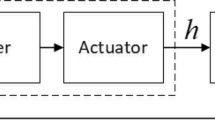Abstract
In this paper, an attempt has been made to investigate the effects of propeller load changes against its performance in open water conditions. Load change of different propellers in a multi-propulsion vessel varies and there is scarce research in this area. The authors have made an endeavor to get a better understanding of the factors causing the load changes in a four-propulsion vessel. The load change of propeller has been linearly decomposed into three parts: ship hull influence, pure interference of other propeller, and coupled effect. A series of CFD simulations has been carried out to realize the decomposition of the load change of propeller. Simulations of single propeller in open water were used to obtain the basis for load change calculation. Simulations of self-propulsion with four propellers were used to obtain the total load change of propellers. To estimate the influence of ship hull, simulations of self-propulsion with only inner or outer propellers were carried out and the load change of propeller in this condition was evaluated. Simulations of four propellers in open water were used to determine the pure interference on one by the other three propellers. The existence of coupled effect appears as the sum of ship hull influence and pure interference does not equate to the total load change of self-propulsion with four propellers. The coupled effect arises, because the interference of other propellers is influenced by the wake. It is found that the influence of ship hull accounts for most significant amount of 75.38% for inner propeller and 45.38% for outer propeller. It has been determined that pure interference accounts for about 10% for both inner and outer propellers. The coupled effect accounts 15.36% for inner propellers and 45.8% for outer propellers.















Similar content being viewed by others
Abbreviations
- \( C_{\text{G}} \) :
-
Correction factor for grid
- \( D_{\text{p}} \) :
-
Diameter of propeller
- D :
-
Experimental data
- E :
-
Comparison error
- \( E_{\text{C}} \) :
-
Corrected comparison error
- \( {\text{IF}}_{ij} \) :
-
Proportion of each component, subscript i represents four types of load change including T (total load change), S (ship hull influence), P (pure interference of other propellers), and C (coupled effect); subscript j represents inner (I) and outer propeller (O)
- \( J \) :
-
Advance ratio
- K T :
-
Thrust coefficient of propeller
- 10K Q :
-
Torque coefficient of propeller
- \( {\text{LC}} \) :
-
Difference of K T between multiple-propeller case and single propeller in open water
- \( {\text{LC}}_{ij} \) :
-
Load change of propeller, subscript i represents four types of load change including T (total load change), S (ship hull influence), P (pure interference of other propellers), and C (coupled effect); subscript j represents inner (I) and outer propeller (O)
- \( P_{\text{G}} \) :
-
Order of accuracy
- R G :
-
Convergence ratio
- S C :
-
Corrected simulation value
- S G1 :
-
Simulation value of grid 1
- U D :
-
Experimental data uncertainty
- U G :
-
Grid uncertainty
- U GC :
-
Corrected grid uncertainty
- U SN :
-
Simulation numerical uncertainty
- U V :
-
Validation uncertainty
- w :
-
Wake fraction
- x :
-
x-coordinate
- y :
-
y-coordinate
- z :
-
z-coordinate
- \( \delta^{*} \) :
-
Estimate of simulation error
References
Abramowicz-Gerigk T (2010) Distribution of flow velocity generated by propellers of twin propeller vessel. Sci J Marit Univ Szczec 20:5–12
Bi J (2013) The preliminary study of design method of multi-propeller propulsion. School of Ship Building Engineering, Dalian University of Technology, Dalian
Bi J, Zong Z (2013) Model test of influence of propeller arrangements aboard a four propeller boat. J Offshore Mech Arct Eng 135:021101
Breslin JP, Andersen P (1996) Hydrodynamics of ship propellers. Cambridge University Press, Cambridge, UK, p 583
CD-Adapco (2009) StarCD uesr's guide-methodology, pp 15–31
Demirdzic I, Muzaferija S (1995) Numerical-method for coupled fluid-flow, heat-transfer and stress-analysis using unstructured moving meshes with cells of arbitrary topology. Comput Methods Appl Mech Eng 125:235–255
di Mascio A, Dubbioso G, Notaro C, Viviani M (2011) Investigation of twin-screw naval ships maneuverability behavior. J Ship Res 55:221–248
ITTC, QM (2002) Procedure 7.5-03-01-01
Kim SE, Rhee S (2002) Assessment of eight turbulence models for a three-dimensional boundary layer involving crossflow and streamwise vortices. In: Proceedings of 40th AIAA aerospace sciences meeting & exhibit, Reno, Nevada
Newman JN (1977) Marine hydrodynamics. MIT press, Cambridge
Shrubsole J (1989) Wake interference with triple-screws. Motor Ship 70(831):44–46
Stern F, Wilson R, Shao J (2006) Quantitative V&V of CFD simulations and certification of CFD codes. Int J Numer Meth Fluids 50:1335–1355
Acknowledgements
This work is supported by projects supported by the National Natural Science Foundation of China (Grant Nos. 51639003, 51679037, 51279030) and High-Tech Ship Program.
Author information
Authors and Affiliations
Corresponding author
About this article
Cite this article
Zong, Z., Hong, Z., Zhang, H. et al. An investigation of load change of propeller in a four-propulsion vessel using CFD. J Mar Sci Technol 23, 122–131 (2018). https://doi.org/10.1007/s00773-017-0460-z
Received:
Accepted:
Published:
Issue Date:
DOI: https://doi.org/10.1007/s00773-017-0460-z




